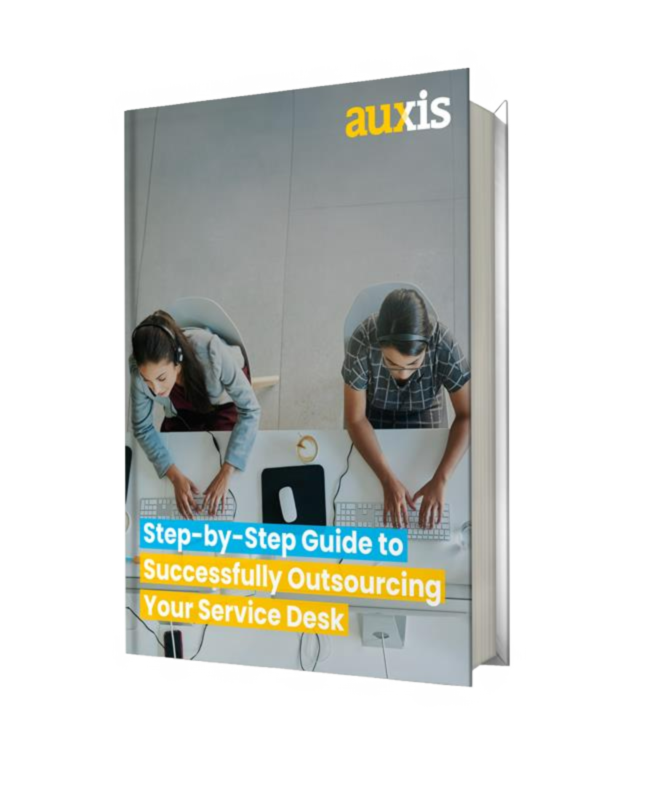After the tumult of 2020, the biggest IT managed services trends of 2021 have a distinctive theme: delivering the tools IT Departments need to emerge from the pandemic as a true strategic partner for their organizations.
COVID challenges, an urgent need to cut costs, and the nation’s severe tech labor shortage drove IT to allocate 13.6% of its budget to outsourcing in 2020 – the highest rate in 10+ years. Through 2025, the IT managed services industry is expected to reach $329.1 billion as CIOs scramble to offload non-strategic tasks and focus their resources on high-value activities that support the corporate growth agenda.
Here’s a look at some of the biggest IT managed services trends that can benefit your business in 2021 and beyond.
1. Meeting the needs of remote workforces
Global lockdowns proved that remote teams can deliver exceptional work. By the end of 2023, Gartner predicts that more than 90% of IT infrastructure and operations staff will work remotely. In fact, Gartner reports that 82% of businesses plan to continue some remote work across all operations after COVID – and 47% will allow it full-time.
Managed Service Providers (MSPs) fit seamlessly into IT’s shift toward “anywhere operations” – the recognition that IT teams can and need to be able to support an enterprise’s distributed operations while working from anywhere.
MSPs have deep experience supporting a variety of customers across multiple locations; supporting workers in their homes simply expands the existing structure. In 2021, MSPs will continue to adapt managed services packages to meet the needs of the remote workforce, including:
- Hybrid solutions. Look for more MSPs to exchange traditional all-or-nothing bundles for customized solutions that enable CIOs to retain core services and fill in gaps where in-house teams fall short.
- Help desk support and secure remote access for offsite workers. The massive uptick in low-tech employees grappling with home technology makes efficient, responsive, knowledgeable help desk services more important than ever. Ensuring remote workers have safe access to sensitive data is equally vital to smooth operations.
- End-point management. MSPs are expanding toolsets that enable secure and distributed end-point management technologies and best practices.
- New collaboration tools that optimize virtual interactions and drive productivity.
- Doubling down on cloud infrastructure. In today’s distributed environment, a strong cloud foundation is essential for deploying IT services effectively.
- Metrics that quantify the digital experience, enabling organizations to better evaluate and adapt IT strategies
- Faster everything. Progressive MSPs will continue to adopt agile methodologies and fast-tracking technologies like low-code tools that help IT keep up with the current pace of change.
2. Shifting RPA efforts into high gear
In the post-pandemic era, there’s high demand for automation that adds resilience and scalability to critical business processes while freeing staff to focus on high-impact initiatives.
Gartner expects staggering 19.5% growth for Robotic Process Automation (RPA) in 2021, led by top-rated platform UiPath. But despite the technology’s potential, only 3% of organizations have managed to scale RPA successfully.
Overburdened IT Departments rarely have the bandwidth to take on RPA delivery. Even if they did, the newness of the technology and the tech labor shortage make hiring experienced talent a challenge.
In 2021, look for MSPs to ramp up automation efforts across a range of industries, with high demand coming from banking, insurance, healthcare, manufacturing, and more.
Providers with a proven RPA Center of Excellence (CoE) are experts at accelerating hyperautomation to drive operational efficiency. They know how to identify the best opportunities and manage the automation agenda. They also maintain separate, ongoing support services dedicated to keeping bots running around-the-clock, despite inevitable process exceptions.
2025 Auxis Help Desk Report: A Step-by-Step Guide to Successfully Outsourcing your Service Desk

Interest is also rising in applying the power of RPA to automate IT operational tasks and improve end-user support. Gartner predicts that hyperautomation will reduce IT operational costs by 30% by 2024, while also decreasing complexity in modern IT environments.
With the C-suite pressing CIOs to focus their teams on the business innovation agenda, MSPs can leverage automation to manage the never-ending number of tickets, alerts, and threats in a company environment.
More than 70% of IT leaders in a recent Auxis poll ranked service management as the most critical area for automating time-consuming, manual tasks, followed by data center operations (52%), application management (48%), end-user support (43%), and security (43%).
3. Overcoming cloud complexity
Cloud complexity is gearing up to become a top tech issue in 2021 – and a key opportunity for MSPs to support IT with operations and management expertise.
More than 70% of IT leaders reported “negative effects” after the rush to adopt cloud technology amidst the abrupt transition to a remote workforce. Without proper planning, siloed cloud projects using different tools popped up throughout many companies – creating pricey redundancy and complexity that caused security risk to spiral.
The exploding number of cloud options available adds to the confusion, with companies struggling to stay on top of the best options between public vs. private vs. hybrid clouds, for instance.
Now that the chaos of 2020 is settling, organizations are looking to MSPs to help normalize their architecture, make informed cloud decisions, and remedy mistakes that accompanied the breakneck pace of pandemic transformation. Companies are also increasingly planning to outsource cloud migrations, ongoing service, and end-user support.
By 2022, Gartner expects the market for cloud system infrastructure services to nearly double to $81 billion, up from $44 billion in 2019.
4. Using AI and machine learning to enhance service delivery
Progressive MSPs are exploring ways to deploy artificial intelligence (AI) and machine learning to improve service delivery excellence and efficiency. Intelligent capabilities hold the potential to transform many MSP services, aiding decision-making and improving IT Service Management (ITSM) processes with functionalities that enable human workers to focus on more important activities. AI also empowers automation, allowing bots to learn instead of mindlessly following commands.
For instance, AI could benefit help desk teams by automating approvals and customizing workflows for service requests. AI and machine learning could also improve incident management by proactively predicting and preventing issues, reducing service disruptions and repeat problems.
Machine learning models can further help MSPs improve service quality and enhance security. For instance, intelligent data mining can reveal optimal times to push patches to various end-points – decreasing failures and increasing client satisfaction. It can also improve security management, enabling intelligent detection of data exfiltration and identifying the reason behind repeated account lockouts.
5. Strengthening cybersecurity protections
2020 saw an unprecedented number of cyberattacks, as cybercriminals took full advantage of the massive influx of people working from home on unsecured machines or mobile devices. Consider these alarming statistics compiled by ZDNet:
- A 400% increase in brute-force attacks in March and April alone on machines running RDP (remote desktop protocol).
- Email scams, the most common data breach for remote workers, exploded by 667% in March alone. Users are now three times more likely to click on a phishing link and enter credentials than they were before COVID – especially if the email uses words like “COVID,” “coronavirus,” “quarantine,” or “vaccine.”
- A 2,000% increase in malicious files with “Zoom” in the name.
It only takes one successful hack to trigger a data breach – bringing average cleanup costs of $3.86 million in 2020 and immeasurable reputational damage to a company. Not surprisingly, cybersecurity is a front-and-center concern in 2021 as companies look to normalize remote work.
MSPs are responding by helping clients achieve advanced cybersecurity protection. Besides safeguarding clients with robust technologies, processes, and controls, look for MSPs to expand their security skillsets in 2021.
New opportunities involve continuously assessing organizations’ security postures and looking for ways to improve and address security gaps on a 24×7 basis. Mobile device security expertise is in particularly high demand, as the distributed workforce relies heavily on mobile devices that companies were previously slow to secure.
MSPs are also set to play a growing role in ensuring clients’ new remote and hybrid work environments are fully protected. Digital transformation efforts like cloud-based collaboration tools and applications can significantly increase security risk if managed improperly, among many others alike.
Managed service providers can help IT organizations navigate the challenges of 2021
In the wake of COVID-19, the way companies work will never be the same. The biggest IT managed services trends of 2021 reflect how MSPs are using pandemic lessons to ensure IT stands ready to meet the challenges of this new normal.


